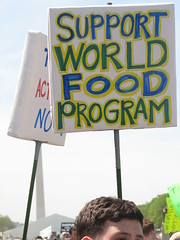There are a great many “changemakers” who have been working diligently to create positive social change in their communities around the world. They create systems, reimagine futures and galvanise communities to bring this change to life. Sometimes this manifests as consultation, social impact hackathons, or placemaking innovation. Other times, it involves developing peer support networks, educating those at the margins of our society or raising the profile of others working on systemic change at community or government levels.
It is hard, emotional – and often largely under-funded work.
To understand how social change actually happens, we look to “problems worth solving” – the large scale, deeply ingrained, intractable problems that, if solved, would generate both economic returns and social impact. We call this creating “shared value”. Often the problems that are worth solving don’t get the attention that they deserve because, by their nature, they are difficult to solve. Often the core issue is well known and well understood by domain experts and those who live with these challenges each and every day. And in most cases, the problem worth solving has been tackled many times – yet persists. One high profile “problem worth solving” is climate change. Another is homelessness.
What is often missing in the social change program is the “burning platform”. Yes, climate change is urgent. Yes, homelessness needs to be fixed. But tackling these issues can be delayed when messaging is obscured, or when political energy is easily retargeted. By their very nature, “shared value” programs require multi-stakeholder buy-in from at least three groups:
- Citizens
- Governments / formal bodies
- Other stakeholders – corporate or community.
Without all three, the program will fizzle out and fail.
In Australia, Beyond Zero Emissions have set out The Million Jobs Plan. It covers seven key sectors, from energy, building and manufacturing to transport, recycling and land use through to training – where targeted investment and activation would transform communities, industries and the lives of Australians. It is an ambitious program that has begun the hard work of galvanising multi-stakeholder groups.
Living with COVID19 has provided a unique opportunity. COVID19 has delivered the burning platform that many changemakers have been waiting for. As Dave Marvit explains:
As the virus fades, it will once again become hard to effect change. Systems will ossify and resist improvement. But we have this unique moment when the cement has, temporarily, unset. We should use it.
Dave Marvit, Grey Swan Guild
The time to make change happen, is now. Let’s get to work.




